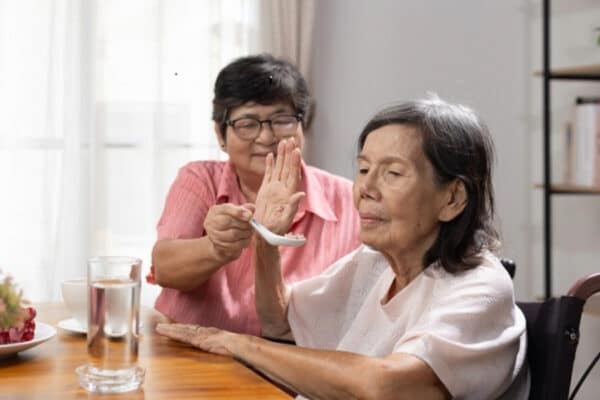Winter’s here, and QCS contributor, Hannah Kelly, has compiled some useful tips for domiciliary care workers to ensure their service users stay warm in their own homes this winter.
How to keep warm at home
- Encourage service users to have at least one hot meal a day. Encourage eating vegetables which hold nutritional value which will nourish the body
- Drink warm drinks
- Draft proof around windows, external doors and letterboxes
- Consider the layout of the room the service user spends the most time in, are the radiators exposed or is there furniture blocking them? Consider discussing this with your service user to maximise heat generation from the radiator
- If your service user has a mini heater, ensure that they have a clear path to walk and minimise the risk of trips and falls
- Ensure that the service user wears layers, this will trap heat generated by the body and keep them warmer than wearing just one thick layer
- Consider encouraging the service user to use a small room which will retain more heat
- Close the doors of unused rooms
- Encourage the service user to keep moving. If they struggle with mobility, perhaps they could wiggle their fingers and toes
Items to wear/use
- Layers
- Long johns or layer up on tights
- Fleece or wool pyjamas
- Fingerless gloves
- Wear a hat inside
- Higher tog duvet
- Flannel sheets/fleece bedding
- Hot hands – instant hand warmers
- Microwaveable hot water bottles (seek advice if you service user is heat sensitive or diabetic)
- Heated vest (with batteries)
Hypothermia
If you have a service user who is very reluctant to have the heating on, explain to them the risks of hypothermia and becoming ill. If you are still concerned, let them know that you have a duty of care to contact the local safeguarding team to relay your concerns.
NHS online states hypothermia is a dangerous drop in body temperature below 35°C (normal body temperature is around 37°C). It’s a medical emergency that needs to be treated in hospital.
Spot the signs of hypothermia
According to the HSE (Health and Safety Executive) website, if the room temperature falls below 16°C there is a risk of hypothermia. They suggest a room temperature of 20°C if you are active and 24°C if you are inactive. Some of the common signs of hypothermia include:
- Not feeling cold even though the temperature is very low
- Slurred speech
- Drowsiness
- Confusion
- Unsteadiness when moving
- Pale, puffy face
- Cold skin in areas that are covered such as stomach and armpits
If you spot these, please call 999 or ensure that the service user goes to A&E.
NHS advises that you do the following while you await medical help:
- Give a warm non-alcoholic drink and some sugary food like chocolate if they’re fully awake
- Keep the individual awake by talking to them until help arrives
- Make sure you or someone else stays with them
Do not do the following:
- Do not use a hot bath, hot water bottle or heat lamp to warm them up
- Do not rub their arms, legs, feet or hands
- Do not give them alcohol to drink
Read more information on hypothermia from the NHS.
Share useful information with service users






